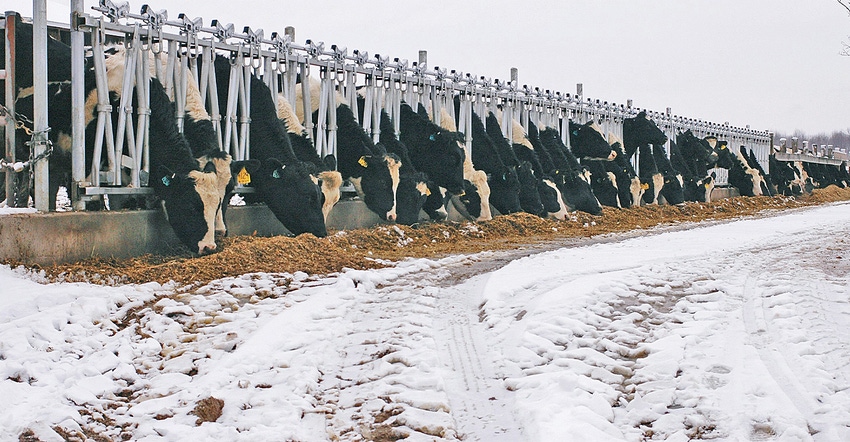
By the time dairy heifers begin their first lactation, they should have reached 85% of their mature body weight, according to Dr. Gavin Staley, a veterinarian for Diamond V.
Heifers used to routinely calve between 24 and 30 months of age. In recent years, Staley says, there has been a trend to breed heifers earlier. Early calving has been promoted because it gets heifers in the milking herd more quickly and lowers heifer feed and rearing costs. While some heifers that calve early milk as expected, others don’t.
Staley says he’s found the explanation. Heifer maturity, defined as weight at calving, is very important. Weight at calving determines not only the performance of first-lactation heifers, but also lifetime performance and your herd’s overall performance.
After analyzing thousands of Dairy Comp records, Staley found three consistent facts:
At five weeks after calving, second-lactation cows will produce 30 pounds more milk than first-lactation heifers.
At five weeks after calving, third-lactation cows will produce 8 to 10 pounds more milk than second-lactation cows.
Herds producing 100 pounds of milk per day per cow will have heifers producing 100 pounds per day at 10 weeks after calving.
What drives this is heifer maturity. Fresh heifers need to be at 85% of mature body weight post-calving, Staley says. If they’re not, heifers will continue to grow during their first lactation, but that growth comes at the expense of milk production. Every pound of missing body weight will cost 7 pounds of milk production. So, one month of growth deficit before calving costs seven months of lactation.
If you calve early, heifers have to grow faster to reach mature body weight. For example, assume your herd’s mature body weight (average weight of third-, fourth- and fifth-lactation cows at 80 to 120 days in milk prior to becoming pregnant) is 1,520 pounds. Close-up springers then need to weigh 1,444 pounds. Subtracting the heifer’s 85-pound weight at birth means the heifer will have to grow 1,359 pounds from birth to calving to reach her target growth. Following is the rate of gain she must then achieve, depending on age at freshening:
Freshening age, ADG
21 months, 2.05 pounds
22 months, 1.98 pounds
23 months, 1.9 pounds
24 months, 1.87 pounds
25 months, 1.77 pounds
“These are quite ambitious growth rates. Average daily gain is more in the range of 1.75 to 1.8 pounds per day,” Staley notes. If you are only achieving 1.8 pounds ADG, heifers calving in 22 months will not only be growing slower, but also will have fewer days to achieve their mature weight goals — meaning they could be 75 to 100 pounds or more underweight.
What is the solution? Staley says you need to collect the following data:
Get mature body weights on third-, fourth- and fifth-lactation cows at 80 to 120 days in milk.
Weigh heifers as they freshen.
Set heifer growth goals for all stages of development, from colostrum feeding through calving, and then meet them.
Weigh calves at various stages of growth to determine if your heifer program is achieving goals.
If you are achieving rate-of-gain goals, you can breed heifers to calve at 22 to 23 months of age. If you are not meeting growth goals, delay breeding so your heifers reach their maturity weight goals at calving.
About the Author(s)
You May Also Like






